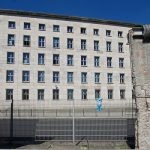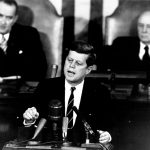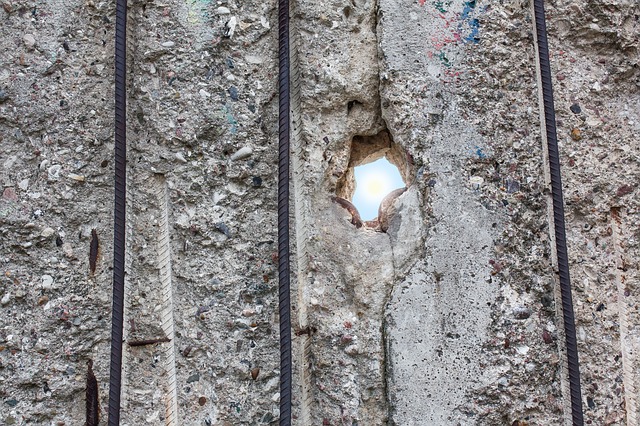
Image source: https://www.jolietconcretesolutions.com/
It is tragic that with the Wall, a brutal instrument of oppression became Berlin’s best-known international symbol. Although the Wall is now decades of bygone history, the city will probably be mainly associated with it for a long time to come. As late as June 1961, Walter Ulbricht publicly declared, “No one intends to build a wall!” However, the head of the Socialist Unity Party of Germany (SED) had long known that all other ways to prevent the massive exodus of the population towards the free West had failed. Since 1952, the government of the German Democratic Republic (GDR) had already sealed off the Soviet occupation zone to the West.
Six railway crossings and five crossings for other vehicles remained open for traffic from the Federal Republic to West Berlin. But hundreds of roads were interrupted, bridges demolished and tens of thousands of people on the GDR side forcibly resettled.
But West Berlin was a loophole for refugees. They could not travel from there to West Germany by land, but they could travel by air. The West German authorities made it possible for them to use the West Allied airlines from West Berlin with new papers. More than a million people had taken the route via West Berlin since 1945. And hundreds of thousands commuted daily across the Berlin sector borders, so the difference in economic development for GDR citizens was immeasurable. In 1960, around 360,000 people went to the West illegally. And this despite the fact that they were sentenced to 3 years in prison! The GDR was on the brink of social and economic collapse because skilled workers in particular were emigrating.
The escape route via West Berlin was so heavily used in 1961 that the GDR leadership had to close it at all costs. They pressed the Soviet government and finally Moscow gave in. On the night of 12 to 13 August, the People’s Police, industrial combat groups and the National People’s Army (NVA) blocked the sector border around West Berlin with barbed wire and the first stone walls. The barriers between the two halves of Berlin were 46 km long, and 155 km around the whole of West Berlin.
The GDR had gambled high, but reactions outside West Germany were initially reserved, because it was not known whether Moscow was behind the cordon. General Lucius D. Clay therefore ordered US tanks to be brought up at Checkpoint Charly. Film footage shows the dramatic events as the large tanks rolled towards the border at full throttle, only braking at the very last moment before the border line and skidding to a halt. When Soviet tanks appeared on the other side, it was clear: Moscow was supporting the GDR leadership.
For the Western Allies, the building of the Wall was a certain reassurance. Until then, an annexation of West Berlin had been expected on a daily basis. The general attitude was: “Better a wall than a war.” People protested, but did nothing.
On 26 August, the remaining crossings were also closed to West Berliners. East Berlin celebrated itself for building the “anti-fascist protective wall”, which was supposed to prevent Western imperialism from creepily undermining the socialist GDR. But only fanatical supporters of the SED believed the propaganda. The flight of hundreds of thousands of citizens had been too obvious. There were a small number of people who immigrated to the GDR from Western states and these were exuberantly celebrated in the propaganda. And they were closely monitored, because they could be spies.
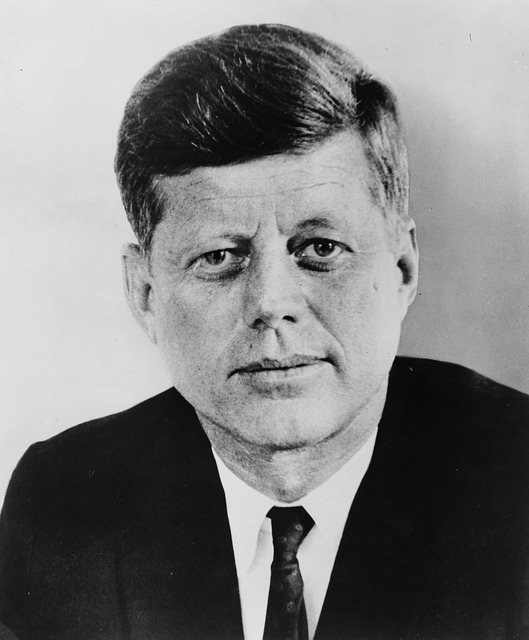
John F. Kennedy visited West Berlin and gave his famous speech on 26 June 1963 with the sentence: “I am a Berliner”. But little changed; it was not until the following December that West Berliners were allowed to visit relatives in East Berlin again for the first time.
On 3 September 1971, the Four-Power Agreement on Berlin made travel easier for West Berliners and citizens of the Federal Republic. But West Berliners continued to have a different legal status than other Germans. For example, they only had a so-called provisional identity card. But every West Berliner and West German could move to the other area at any time and obtain the corresponding identity card there. Compulsory military service did not apply in West Berlin and so thousands of young men moved from West Germany to Berlin at the age of 18 to avoid it.
The barriers around Berlin consisted of a simple wall on the east side in the “hinterland”, followed by the so-called “death strip” with rows of barbed wire and massive obstacles that could stop vehicles. Towards West Berlin, grid-like areas with long metal spikes pointing upwards followed to prevent crossing. At water areas, like here at the Wall Museum, the water was the last barrier, otherwise a wall of concrete segments followed. This wall, which was located a few metres away from the actual state border on GDR territory, is the structure that was perceived in the West as “The Wall”. Its “west side” was spray-painted by the wall artists, not the Hinterland wall which can be admired today as a work of art as the Eastside Gallery.
Because of the geographical conditions, it was usually possible for East Berliners to go as far as the Hinterland Wall without being arrested immediately. In Brandenburg, however, there was a restricted area in front of it that only GDR citizens who were considered particularly reliable were allowed to enter. But everyone was immediately watched from the watchtowers. Those who thought they could sneak through the death strip at night usually failed because of the electronic surveillance systems. Hundreds of guard dogs were constantly used as biological alarm systems.
biological alarm systems. Unlike the border with West Germany, however, there were no extensive minefields or self-firing installations in Berlin.
But the GDR border guards were no less deadly. The exact number of fatalities will probably never be known. Many GDR documents were destroyed. Most people in East and West had come to terms with the Wall. As long as the Soviet Union stood behind the GDR leadership, a change in Germany’s situation was not to be expected. But then the miracle happened. The arms race had swallowed up enormous sums of money and the Eastern Bloc in particular suffered. The lack of modern consumer goods was clearly felt by the citizens. For they knew what was available in the other Germany. Practically every East Berliner received West German television and many had relatives in the West.
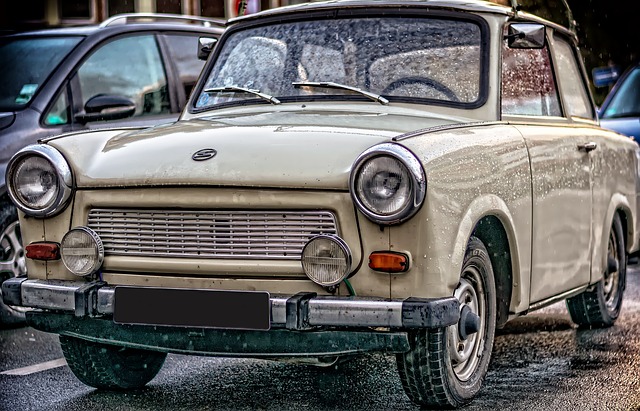
The GDR citizen who finally received a Trabant car after years of waiting was happy. Until he met the Western vehicles on one of the transit motorways. The air-cooled two-stroke thus indirectly contributed a lot to the fall of the GDR. The superiority of socialism emphasised in the propaganda was such an obvious lie that it was no longer credible. Since the 1950s, people had repeatedly declared that the GDR would overtake the West economically. More and more, whispered jokes like the supposed slogan “overtake without catching up” circulated. And this despite the fact that state security noted such comments and threatened punishments.
For lack of foreign currency, the GDR could not buy on the world market. So they tried to get hold of West German money by all means. The Federal Republic paid large sums for transit rights to West Berlin and people visiting the GDR had to make a compulsory exchange. For one D-Mark they received one GDR mark. An exchange rate that was far removed from the reality on the financial markets; in the Western exchange offices, one received many times more D-marks for one GDR mark. GDR citizens had D-marks in their hands that they had received from inheritances or as gifts. To siphon them off, shops were set up where Western goods could be bought for Western money. Since the prices there were significantly higher than the purchase prices, the state made a profit. And annoyed the citizens without West German money.
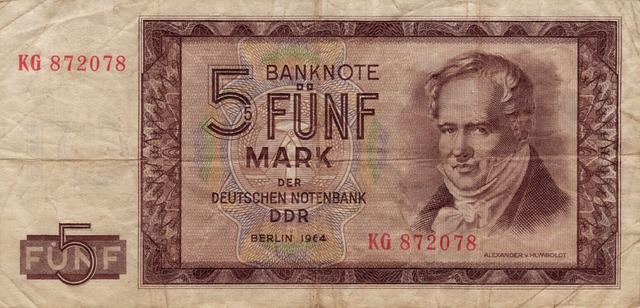
Although wages were low, the lack of consumer goods also resulted in enormous savings in GDR marks. Shops were set up where shortages could be bought for very high prices. But this foray into capitalism only worsened the mood.
The crisis reached boiling point in Poland. Workers went on strike at the Gdansk shipyard, led by Lech Walesa. Pope John Paul II used his influence in Catholic Poland to mediate. But more importantly, there had been enormous changes in the Soviet Union. With Mikhail Gorbachev, a man had come to power who modernised politics. Finally, disarmament negotiations were successful. And he knew: the economy of the Eastern Bloc was about to collapse.
President Reagan’s speech at the Brandenburg Gate on 12 June 1987 became widely known in the GDR via West German television. “Tear down that wall” suddenly seemed a realistic possibility. But it took more than two years until Hungary opened the border to Austria for GDR citizens on 10 September 1989. The demonstrations in the GDR had grown from a few people to hundreds of thousands. Fortunately, the leaders kept their nerve and did not give the GDR government the means to put down the protests in blood. Without Mikhail Gorbachev’s approval, the SED did not dare to use its means of power.
The enormous propaganda machine that celebrated the GDR’s 40th anniversary fizzled out. The “anti-fascist wall” could now be circumvented. The GDR government around Erich Honecker fell. At first, other SED bigwigs thought they could take over and keep power. They thought they could create an outlet with a controlled opening of the Wall with visa applications, but within days all illusions were shattered.
On 9 November, the announcement of the possibility to travel became a farce; towards evening, tens of thousands of citizens at the checkpoints forced the Wall open without visas and controls. Even though the GDR dragged on for some time until reunification, 9 November 1989 ended the history of the Wall. Wall-snatchers and demolition companies left little of it behind.


